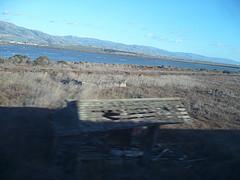It can be used, for example, to dilute the coffee (in the preparation of the US). (7) – Crane couple through this valve steam is under pressure from the boiler. It is used for whipping milk (at Cappuccino, latte, etc.). (8) – gauge pressure sensor. Shows the pressure in the system, as well as the pressure in the boiler. Located on the front of the espresso machine. (9) – pressure switch is used to signal the control unit of achieving an appropriate level of pressure in the boiler or pressure drop. (10) – Water level indicator in the boiler water level visual indicator in the boiler.
Located on the front of the espresso machine. Allows staff to either technique to monitor manually filling the boiler. Filling the boiler itself is, however, in automatic mode. This indicator is present on all models bar Iberital L'Anna. (11) – Volumetric sensor sensor control servings. Present only on the automatic coffee maker. Designed for metering the amount of water supplied to the heat exchanger glass, which in turn displaces the same amount of water supplied to the group of the strait. Is controlled by an electronic unit.
Can be programmed to several different size portions. (12) – valve solenoid valve, designed to fill the boiler with water. In the normal state is blocked, until no need to add water into the boiler. The machine is equipped with a probe-level – a rod of stainless steel, which is in contact with the water inside the boiler. The probe is connected to a central processing unit, which constantly for information about the water level. When the water level below this, the central processor includes a pump and solenoid valve opens and the machine starts to load up the water until the probe does not indicate that there has been optimum level. (13) – Pressure relief valve (overpressure valve) comes into effect when the system pressure reaches 11-13 Bar. In the event of his trip is draining the system to drain until pressure in the system will not fall.

 Flanged fittings Joins pipeline or vessel with flanges. The advantage is the possibility of repeated assembly and disassembly of the piping., A good tightness of joints and convenience of their braces, high strength and applicability to a wide range of pressure and passes. Disadvantages – the possibility of easing tensions and loss germetichnostiso time, large dimensions and weight. This product can produced by various technological processes. The most widely used forging, stamping, molding by conventional methods (open method smelting) with a machined billet. These staff technologies are and the advantages and disadvantages. At present, oil and gas processing plants and chemical industry for connecting various pipelines widely used product in the form of ring-type flange blanks.
Flanged fittings Joins pipeline or vessel with flanges. The advantage is the possibility of repeated assembly and disassembly of the piping., A good tightness of joints and convenience of their braces, high strength and applicability to a wide range of pressure and passes. Disadvantages – the possibility of easing tensions and loss germetichnostiso time, large dimensions and weight. This product can produced by various technological processes. The most widely used forging, stamping, molding by conventional methods (open method smelting) with a machined billet. These staff technologies are and the advantages and disadvantages. At present, oil and gas processing plants and chemical industry for connecting various pipelines widely used product in the form of ring-type flange blanks.